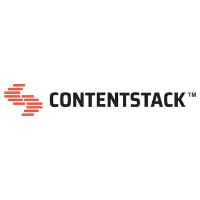
Contentstack
View Brand PublisherBuilt in India, built for the world: Uncovering Series B-funded company Contentstack’s journey
Contentstack, a leading Content Experience Platform (CXP), has been recently positioned as a leader in the IDC MarketScape of Content Management Systems for Persuasive Digital Experiences. While not the first industry recognition, it has further cemented its position as one of the most sought after cloud-native content experience platforms. Earlier in June, Contentstack raised $57.5 million in an oversubscribed Series B funding round with its total venture funding touching $89 million.
The startup’s feature-rich platform makes it possible for enterprises and mid-sized companies across sectors to easily drive content-rich digital interactions across touchpoints. In fact, 2021 saw Contentstack adding hundreds of enterprise customers to its clientele base, which already included companies like Broadcom, Chico's FAS, Ellie Mae, McDonald's, NBC, among others.
Interestingly, while the San Francisco-headquartered startup has emerged as an industry leader today, its beginnings root back to 2008 in Virar, a suburb of Mumbai when it was an incubation project led by passionate young techies from lesser known engineering colleges. Today, its 150+ strong engineering and R&D team based in Virar is at the core of powering Contentstack’s tech prowess. “While Contentstack is a global company headquartered in the US, it was entirely conceived and built in India. And, even today, this team continues to drive innovation and growth of Contentstack,” says Nishant Patel, Founder and CTO, Contentstack.
From passion to product
Contentstack’s journey began at Raw Engineering, a services company, as among the many products that the engineering team worked on. Nikhil Jain, Senior Technical Fellow, who has been with the founding team for 14 years, shares, “As a services company, our first goal was to cater to the clients. But, driven by a product-mindset, we wanted to work on developing products that solved business problems. So we put in a couple of hours everyday after work towards building tech products.” Suvish Thoovamalayil, a Technical Architect at Contentstack was part of the team that worked under Nikhil’s guidance. He shares, “We were working on a backend-as-a-service offering. And, at that time, Nishant proposed the idea of developing a headless Content Management Systems (CMS) - a CMS that was driven by APIs. And, while it had some shared characteristics with the backend-as-a-service, it had a lot of scope as a product in itself to solve core problems related to content management.”
Suvish and Nikhil underline that one of the challenges for enterprises using traditional CMS solutions was the increasing demand to create content not just for the website or mobile applications, but also for internet-enabled devices, digital kiosks, etc. And as these use cases became all the more apparent, the team realised the need to decouple the data or the content from the presentation. “Initially we set out to address these gaps with Contentstack,” explains Suvish. Achieving breakthrough by addressing that core problem statement of decoupling data and presentation helped Contentstack foray into the enterprise space.
The other core focus for Contentstack in the early days was to simplify content authoring. A decade ago, traditional existing CMSs did not leverage the cloud, which meant any entity that required just a presence on the web required a dedicated team of technical experts to manage the content management and publishing on the website. As the demand for faster and more innovative publishing had grown, long timelines required to publish were no longer acceptable. Championing the “headless” approach, Contentstack led the way to revolutionise the way content was authored, managed and published.
“Because this approach took full advantage of the cloud, the content building blocks are readily available for new applications, and it allowed teams to rapidly iterate on new ideas at little upfront cost,” explains Suvish. Even today the ability to provide and simplify content authoring in the hands of editors remains the company’s core focus. “Our approach since inception has been to empower and bring the ease of digital experiences to the business (non-IT) users in any company that has a web content authoring, publishing and management requirement,” says Suvish.
Contentstack has continued to innovate on its core CMS offering and build features that respond to the ever-evolving needs of content publishers. Last year, Contentstack delivered 200 feature releases and enhancements. This included 100 percent API coverage for platform features, enabling cloud-agnosticism, enabling private cloud option, ability to restore deleted data from a stack, bulk publishing and content migration capabilities. The features allowed for a highly modularised approach for businesses where they could enable the microservices they require and integrate with other microservices in the ecosystem. “This has given businesses true flexibility in making the right tech decisions,” says Nikhil.
A different spin on driving innovation
People, process and culture drive the evolution and transformation of the product and the content experience at large at Contentstack. It has successfully addressed not just technology challenges, but also challenges that are considered detrimental to building successful tech companies ground up.
Initially, Contentstack had minimal instructure to support an IT business. While power cuts were unheard of in Mumbai, just 60 kms away, the same did not apply. In addition, even a steady internet connection was a challenge a decade ago. “It was hard for people to even imagine the possibility of starting and running an IT company in Virar. But, we were doing just that by battling these infrastructural challenges,” shares Nikhil.
In addition, Contentstack was building a team by scouting for talent from local engineering colleges, one that is considered unusual when you are looking at building a global product for a global market. But, a decade ago, working in a young IT company was associated with a lot of scepticism and hesitation. Another challenge was that it was not just aspirational for young people to work in reputed IT companies but also those that were based out of swanky IT parks in the city, even if that meant longer commutes to work.
But, Nikhil and some of the early team members – many of whom continue to be part of Contentstack today – were instrumental in inspiring a pool of young engineers from the local colleges in Virar to join the team. Even today, the company continues to remain committed to hiring based on merit and not pedigree. “We are still based in Virar; albeit in a swanky office in the campus of an engineering college where we began our journey,” shares Mayank Mishra, Vice President, Engineering, Contentstack. It was in the computer lab of this college that the founding team began working and building the company ground up after the students had left for the day. The team worked in the lab after the students had left for the day and it was only a few months later that the team moved into its own space - a repurposed tile factory.
Mayank, has been with the following team for 14 years and grew up the ladder at Contentstack. “The COVID-19 pandemic, in many ways, has exemplified that innovation need not come only from the best institutes or companies, but those who are constantly open to challenges and learning. And, we have been demonstrating that for the last decade,” says Mayank.
The other factor that has been instrumental in building a strong innovative culture at Contentstack has been a culture that promotes ownership. “There is no hierarchical mindset. This enables employees to take ownership of projects that they believe in and work on it, an opportunity that doesn’t come by easily in most organisations. The ‘get things done’ mode is always on. And, this helps you evolve and become better skilled,” says Suvish. He explains, “At Contentstack, you are not solving just a localised technical problem. It’s as much about how that problem needs to be solved to make the product better; you develop a lot of skill-sets in the process.” Unlike most organisations, where technology choices are dictated top-down, the engineering and R&D teams are allowed a lot of autonomy. “This has led us to using technologies like Kubernetes, micro-frontends, microservices, among others, something that we use day in and out,” he adds.
This focus on democratisation of ownership has led to a sustained growth of the product. “In the initial days, we worked like a single startup. Today, each of the teams in the engineering and product division work as startups within a startup, bringing different perspectives to product development,” explains Mayank.
Spinning out as a separate company from Built.io in 2018 has propelled Contentstack on an accelerated journey towards growth and innovation. “But, the culture has been what it used to be in 2008,” says Suvish. Having emerged as a CXP leader, Contentstack is now looking towards disrupting digital experience as a whole. “Evolving into a modern Digital Experience Platform (DXP) will provide our customers with the flexibility of deploying best-in-class solutions, which could be provisioned and paid for as necessary. Instead of getting locked in to a suite, a truly modern DXP platform provides enterprise clients with the tools such as microservices that connect with other microservices, and enable quicker provisioning of new services, which in turn help them gain competitive advantage to serve their customers with a much better time-to-market,” says Nishant.







